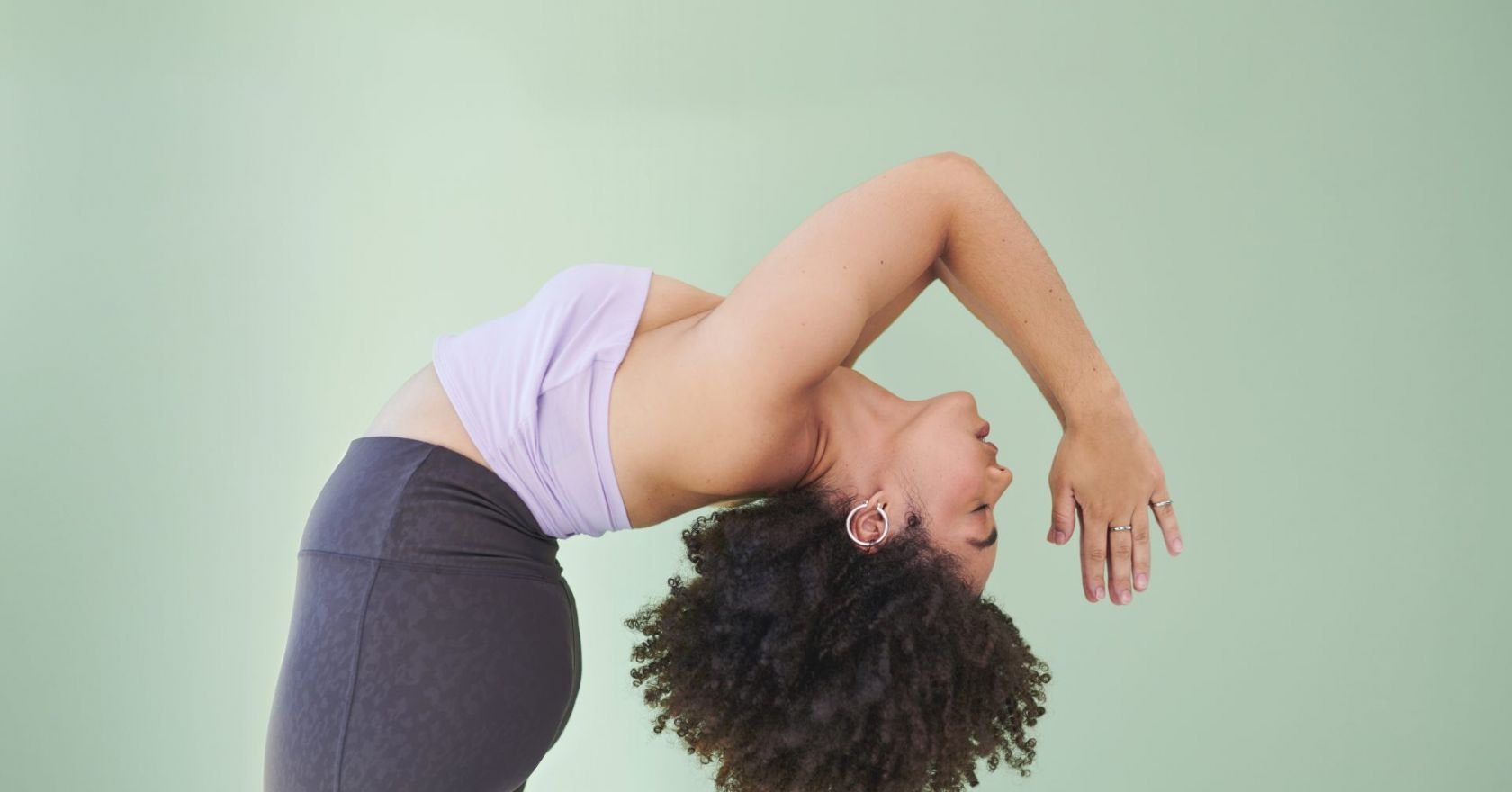
Yoga is so damn good for us and comes in so many different forms – you could do a different practice every day. So why, then, is it so hard to get on the mat? The yoga guilt is real, says Strong Women editor Miranda Larbi.
Yoga is a brilliant activity. It can stretch and strengthen hard-to-reach muscles. An hour on the mat leaves you feeling limber – your hips more open and core switched on. The breathing helps to calm the body and mind, while the soft music or gentle voice of the teacher is often super soothing. I love yoga. And yet, I rarely do it.
Despite the fact that I know yoga has all these benefits, I’m lucky if I turn up to a class once a month. Over the lockdowns, our household practised almost every evening and that routine definitely had a positive impact on my running – enabling me to run more regularly without picking up niggles.
But since the start of 2022, I’ve done a handful of classes on YouTube or in-studio. I’m busy – working, running, cycling, sleeping. So why do I feel so damn guilty about not doing yoga more often?
You may also like
11 tips to make yoga feel easier and more enjoyable
I’m not the only woman who feels bad for not downward dogging enough. When Dr Amal Hassan, a sport and exercise medicine consultant, recently shared a story on Instagram about missing yoga and coming back to it after a period of ignoring it, she received a DM from a follower that said reframing yoga as coming back to “a family member who really loves me” made her feel “less guilty for not doing it all the time”.
Dr Hassan went on to write: “It made me think: what if you just moved with freedom, to maintain health – not just physical health and strength, but mental wellbeing and strength – in tune with your body’s needs, without chasing an athletic identity, but simply for pleasure without stress.”
Is there some external pressure on women to be the kind of floaty goddess who can get their ankle above their head, breathes through moments of tension and doesn’t build muscle in the ‘wrong’ places?
“Yoga is lovely – I practise it, I love the mental wellness/mindfulness and gentleness that comes with it,” explains PT Lucinda Newman-Jones, founder of Her Strength. “But I think it’s marketed at us as the only way to stretch or mobilise, which might play into the guilt associated with not practising regularly. In reality, lots of forms of movement are great for this too.”
Even she, a yoga-loving PT, has gone through periods where she’s “only followed an online class every now and then”. “Personally, I don’t feel guilty for not yoga-ing enough because I know I’m getting sufficient mobility training within my strength workouts. However, I certainly feel like I’ve given myself some proper self-care when I do a yoga session, so it’s more a case of feeling guilty for not giving myself enough ‘me’ time.” And it’s that spiritual wellbeing element that lures her back into a yoga class when she hasn’t gone for a while.
“While yoga can be a wonderfully mindful way of getting in some movement, stability and mobility,it’s important to remind ourselves that it’s consistency that counts within our fitness journey – so the main thing is that we’re doing something,” Newman-Jones continues.
“If you enjoy and feel that you get more benefit out of another form of exercise – weights, running, group exercise classes or a sweaty HIIT session perhaps – then that’s absolutely fine. Doing what you enjoy will keep you coming back for more. There is no such thing as a ‘perfect’ fitness programme – it all depends on the individual and their circumstances.”
The thing is that lots of runners like me are in something of a “fitness debt”, usually because we don’t stretch, balance or mobilise enough. I definitely don’t dedicate time to stretching or warming up properly before heading out for a session – something a regular yoga practice could help with.
“Yoga can feel like a lovely release for tight and tense muscles, but we must be careful of thinking we need to constantly stretch at the expense of not strengthening the muscles… A well-balanced and well-executed strength training programme should include sufficient mobility by ensuring to work the muscle in a lengthened position – not just loading it in a contracted position,” says Newman-Jones.
That might mean balancing using a leg curl machine (which contracts the hamstring) with Romanian deadlifts (which lengthen the muscle). That RDL, she explains, is “just as good as downward dog in yoga, and you have the added benefit of being able to progress it by adding load. Providing you are working on some mobility (think strength and flexibility combined) within your fitness schedule, you’re doing good for your body,”
And as for runners who do the same movement pattern for hundreds, if not thousands of reps, she says that you can’t lose by incorporating relevant stretches into your regime. And yoga – when you have the time and inclination – can be great for that.
For more fitness and wellbeing thoughts, visit the Strong Women Training Club.
Images: Getty
Source: Read Full Article